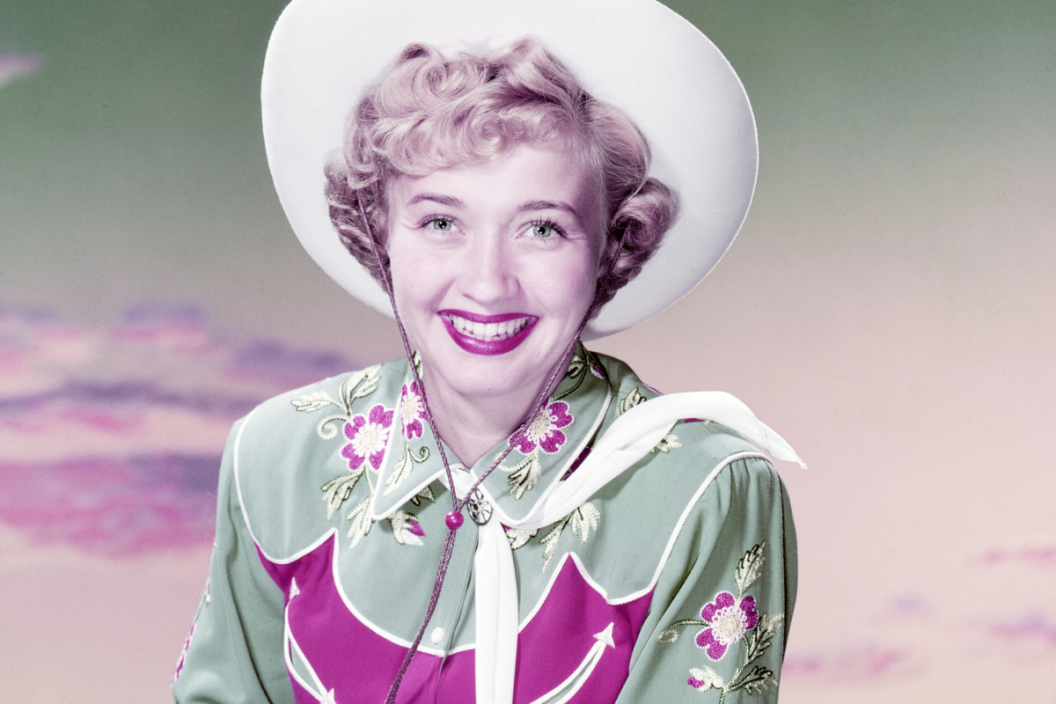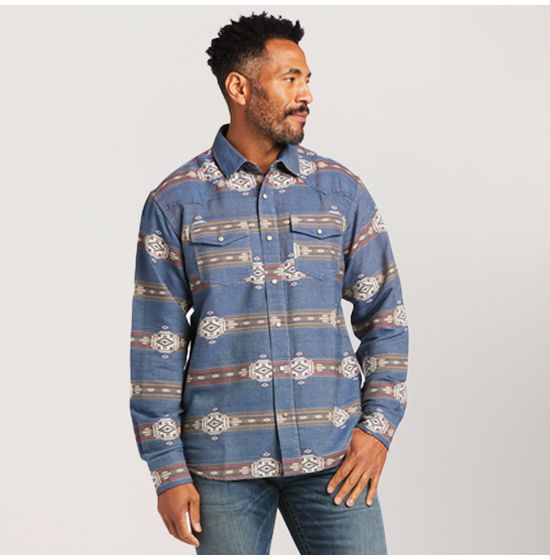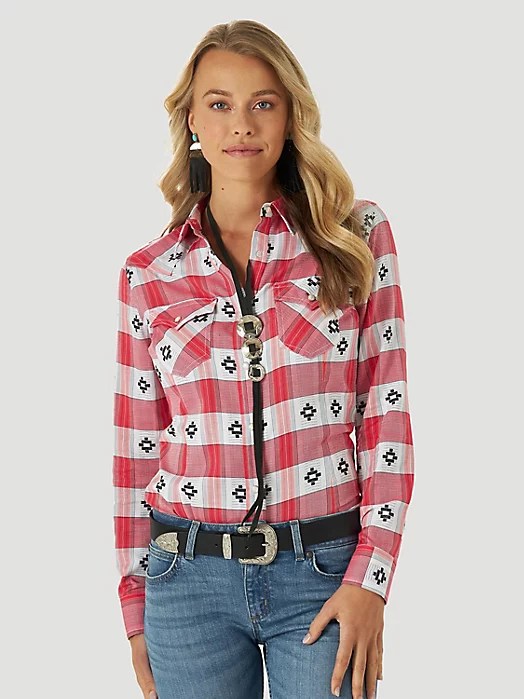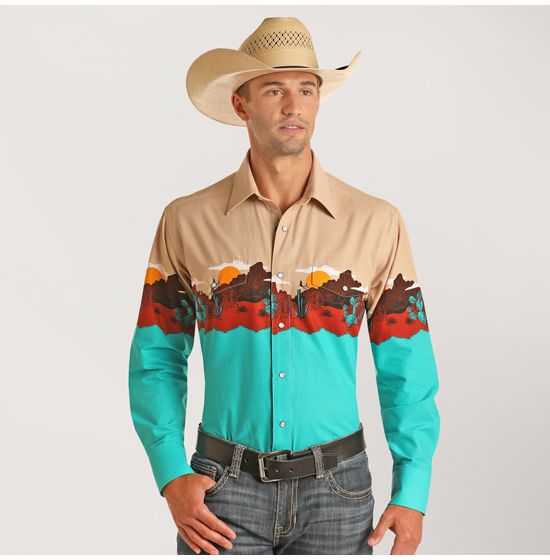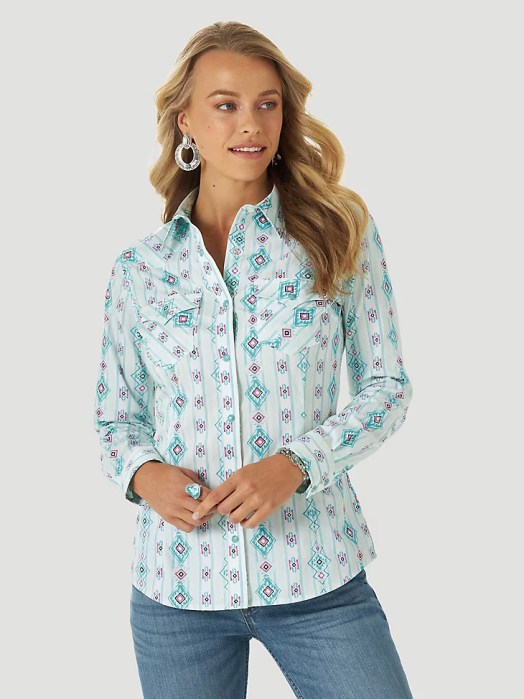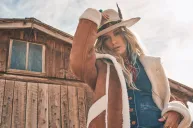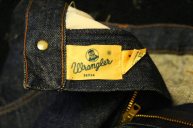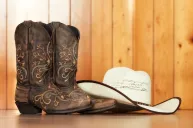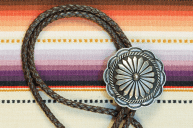Western wear is distinguished by clothing with classic, instantly recognizable details that both serve practical purposes and present the wearer as sharp, capable, and, yes, stylish. Western shirts are perhaps the item of clothing that instantly evoke the look and feel of Western wear beyond all others. Like most American fashion, it's an amalgamation of details from an assortment of cultures.
As reported by GQ, Western shirts are descended from the traditional Latin American pleated shirts, guayaberas, worn by Mexican cattle herders, or vaqueros, which inspired the instantly recognizable yoke front.
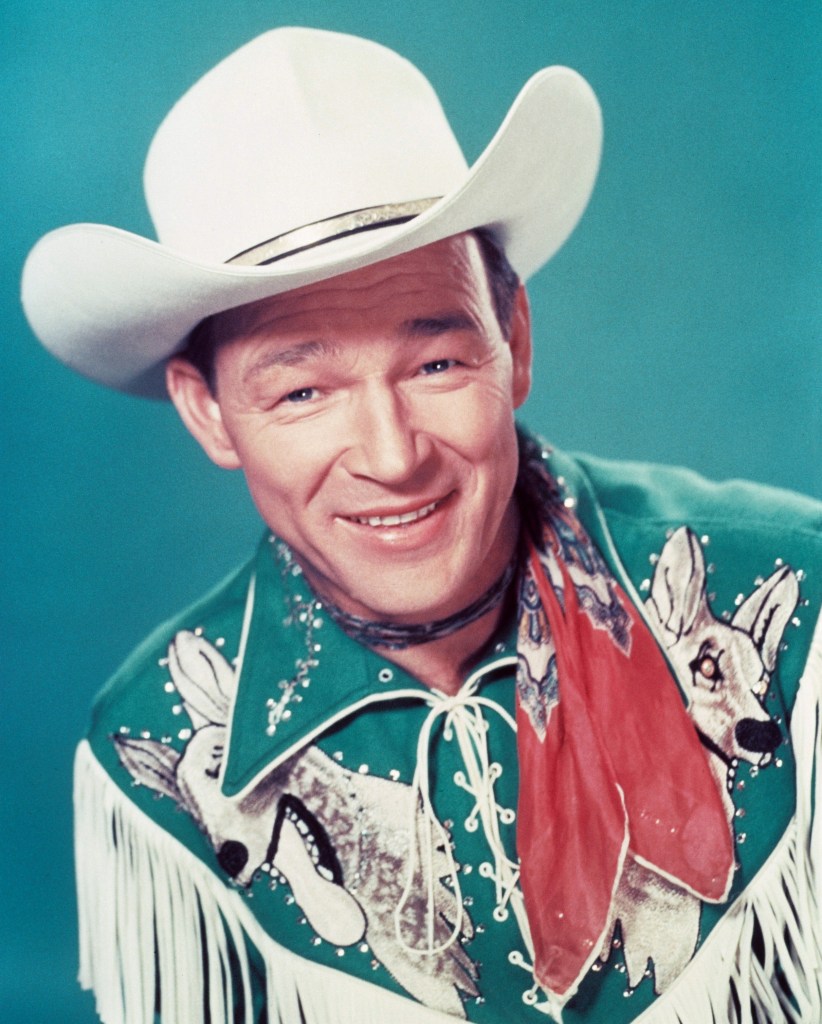
Roy Rogers (1911-1998), US actor and singer, wearing a white cowboy hat, red neckerchief and fringed western shirt in a studio portrait, against a blue background, circa 1950. (Photo by Silver Screen Collection/Getty Images)
According to Texas Monthly, before the 1920s, actual cattle hands and ranchers tended to wear plain, loose-fitting, collarless shirts made from cotton or wool. When cowboys became pop culture heroes thanks to the Westerns made starting in the 1900s, their outfits as seen on the silver screen needed a little more flash and style. Early movie stars of the silent Western era like Tom Mix and Gilbert M. "Broncho Billy" Anderson sported shirts with buttoned bib fronts, contrasting piping, and decorative pockets.
This led to country singers like Gene Autry adopting the newer, fancier Western shirt designs as well. The popularity of "singing cowboys" in the 1930s as well as the rise in professional rodeos continued to introduce the shirts to the general public, and eventually, actual cowboys started adopting the look popularized by the cowboys of stage and screen.
These Western shirts were often constructed from gabardine, while the ones worn for work were generally made from denim, which had already proven itself to be a sturdy, durable fabric. The many signature details of the Western shirt serve practical purposes as well as provide eye-catching design features, as noted by SNEUM, a Danish clothing company that describes itself as "proposing a Scandi take on the yee-haw agenda." These include the two chest pockets, which are perhaps the shirt's most iconic design element. A snapping flap pocket keeps objects safe while the wearer is on horseback or working.
In contrast, a curved "smile pocket" allows easy access and is usually reinforced with embroidery that is both decorative and employed to prevent tearing. The pointed matching yokes on the shirts' fronts and single yoke centered on the shirts' backs provide an extra layer of protection and insulation from the elements; in addition to the guayabera, they are thought by some to be modeled after leather capes traditionally worn by Native Americans. The yokes also serve the purpose of highlighting the wearer's shoulders, giving them a strong and broad appearance that suits the cowboy image well.
The shirt cuffs are longer and fit tighter than other cuffs in order to avoid getting snagged or caught while working. Per Stages West Boots & Apparel, Western shirts also feature a longer overall length to help them stay tucked in during riding or working and an oversized collar that can be buttoned or snapped down or pulled up to protect the wearer's face from the elements.
Another important aspect of the design is the intricate and colorful embroidery that often decorates Western shirts. True West traces the appearance of eye-catching, heavily embellished Western wear to the 1920s and the rise of Hollywood cowboys, noting that traditional Native American craftwork using beading and porcupine quills served as inspiration. Nathan Turk and Nudie Cohn were both California-based tailors who brought the glitz and flamboyance of stage costumes to Western wear in the 1940s, adorning shirts and suits with glittering, sequined embroidery and appliques. Both men immigrated to the United States as children, Turk from Poland and Cohn from Ukraine; Eastern European is famous for its folk design, often displayed via colorful embroidery.
Both Turk and Cohn worked with tailor Manuel Cuevas, who per the National Endowment for the Arts learned to sew as a seven-year-old growing up in Mexico, another hub of folk design and embroidery. He eventually immigrated to the United States and after several years as Cohn's lead tailor, Cuevas started his own operation, Manuel Couture, in 1975. He's credited with designing Johnny Cash's "Man In Black" look and other luminary clients include Emmylou Harris and Dolly Parton.
Cuevas was honored as an NEA National Heritage Fellow in 2018. Brenda Colladay, vice president for museum services of the Country Music Hall of Fame and Museum, noted "Like America, Western wear is a true melting pot of influences" and specifically lauded Cuevas for "provid[ing] a bridge from the first generation of performers who embraced flashy western-styled, to the next, and the next. His creations are valued as works of art as much as stage wear."
The cuffs and front of Western shirts use snaps as closures rather than buttons. This wasn't always the case; the earliest examples of Western shirts used buttons, and snaps didn't come into favor until incorporated by Jack A. Weil, a former garter salesman whose innovations revolutionized the shirt's design. Per his 2008 obituary in The New York Times, "Papa Jack" Weil set up shop in Denver, Colorado in 1928.
He eventually joined the Stockman Farmer Supply Company, and as he said in a 2001 interview, "The first thing I did was get rid of the farmer." A savvy marketer and publicist, Weil promoted Western wear from the beginning, at one point convincing the town of Cheyenne, Wyoming to require attendees of their Frontier Days rodeo to dress the part, charging those who failed to do so fines that went to charity and providing a deal on his clothing for those who needed Western outfits.
By 1946, Weil had founded his own company, Rockmount Ranch Wear. There had been a metal shortage during World War II, and Weil used the newly available supply to make diamond-shaped metal snaps, which he began using on all of his Western wear, often with the instantly iconic mother of pearl snap covers. Texas Monthly reports that Weil's idea to use snaps was inspired by a Chinese tailor he saw putting glove snaps on a shirt in San Francisco. Weil contacted the Scovill Manufacturing Company and ordered their Gripper fasteners, which had yet to be used on clothing.
By 1939, Rockmount was producing Western shirts with snaps. AZCentral notes that snaps are a better choice for cowboys than buttons because they're easy to do and undo with one free hand, as when someone is working on horseback, they often have reined in their other hand. The snaps also provide extra safety, as they are less likely than buttons to break and will tear away when caught on a fence, horn, or saddle. Weil remained Rockmount's CEO until his death at the age of 107 and continued coming into the office every day until shortly before he died. He reportedly attributed his longevity to "quitting smoking at 60 (after starting at 40), drinking at 90 and eating red meat at 100."
Per Forbes, Rockmount is now fourth-generation family-run, remains one of the oldest United States clothing manufacturers along with Levi and Pendleton, and continues to manufacture their products entirely within the States. Fans have included everyone from Elvis Presley to Robert Redford to Ronald Reagan to Garth Brooks and they remain a stylish choice within and outside of country Western culture.
READ MORE: A Brief History of Cowboy Boots: From the Ranch to the Dance Floor
Editor's Note: Products featured on Wide Open Country are independently selected by our editors. However, when you buy something through our links, we may earn a commission.
